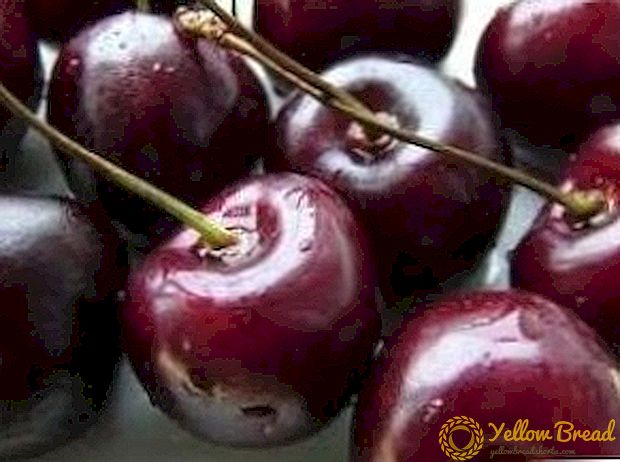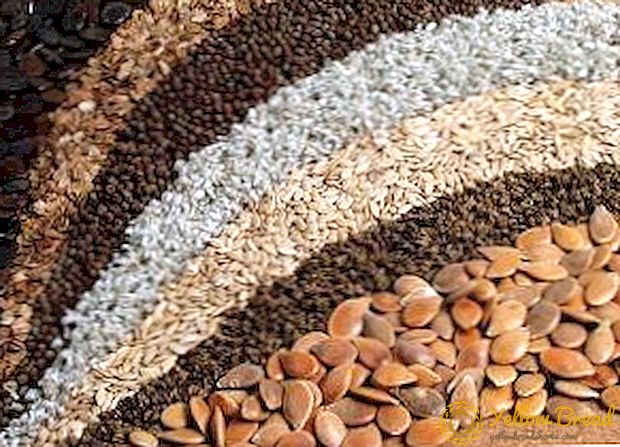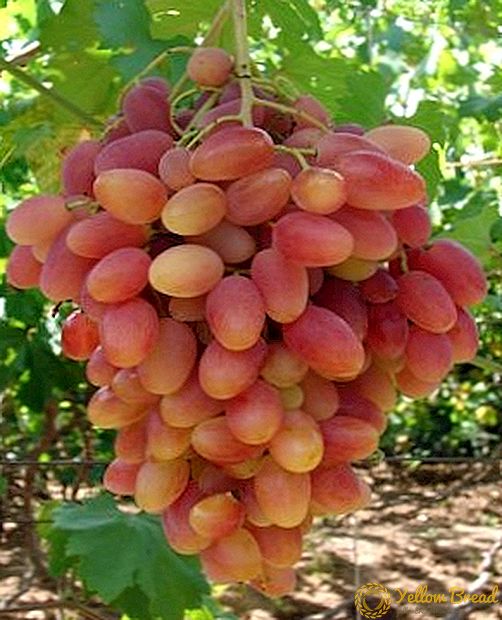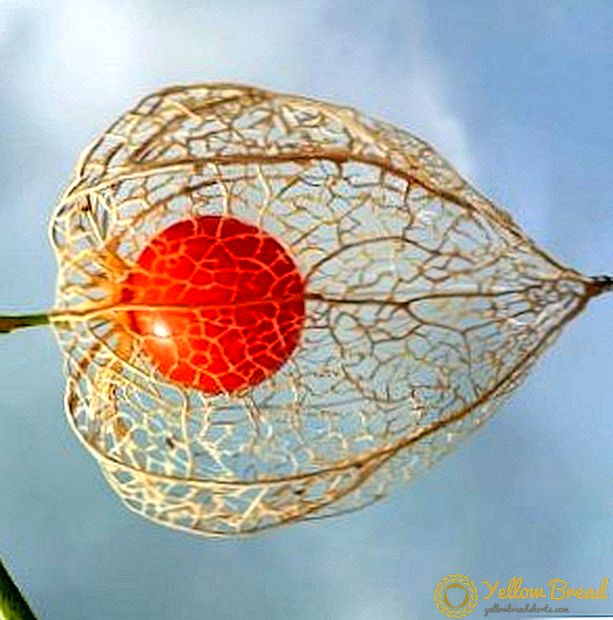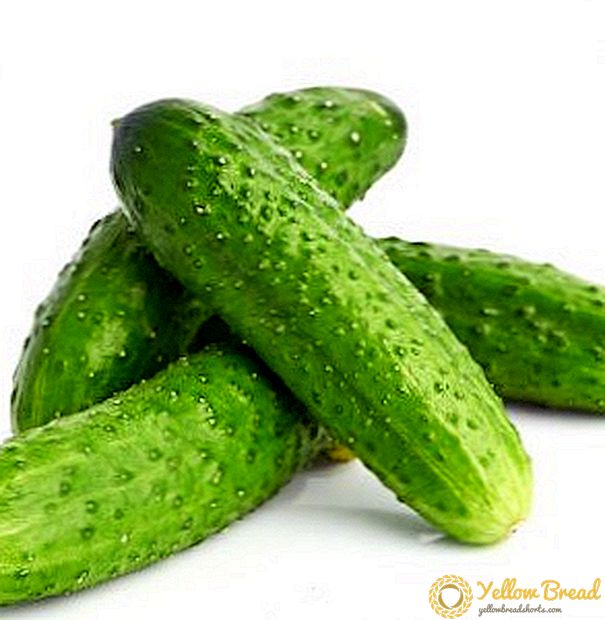
Pear is a very tasty and juicy fruit that is just starting to come to our latitudes.
This plant is very whimsical to weather and climatic conditions, so the most popular varieties are grown in the Caucasus and Central Asia.
We are accustomed to the pears that once grew in the gardens of our grandparents.
The taste of such pears is tart and tart.
However, in recent years, breeders have managed to create a huge variety of pear varieties that can successfully grow and bear fruit in the middle belt.
- What are the advantages and disadvantages of varieties for the middle band?
- Autumn pear varieties
- Pear "Marble": variety description
- Description of pear "Elegant Efimova"
- Pear variety "Favorite Yakovlev"
- Pear "Bere Moskovskaya"
- Pear "Otradnenskaya"
- Summer varieties: description
- Pear "Bessemyanka"
- Pear "Lada"
- Pear "Duchess": description of the variety
- Pear "Favorite Clapp"
- Winter varieties
- Pear "May Day"
- What is special about planting pears for the middle band?
- How to care for pear seedlings?
- Watering seedlings
- Pear Tree Pruning
- How to fertilize a pear?
- How to protect trees from pests?
What are the advantages and disadvantages of varieties for the middle band?
Artificially created varieties differ in both large size and excellent taste. However, among the many varieties of varieties worth paying attention to the term of ripening fruits.
Autumn pear varieties
Fruits of such varieties survive only in the second half of September. However, their advantage is that their fruits can be stored for a very long time. In particular, if you place the pears in a dark and well-ventilated place, replacing them with paper or straw, you will be able to eat fresh fruit for more than a month.
Among this kind of varieties are the following:
Pear "Marble": variety description

This variety belongs to the early autumn, obtained by crossing Bere winter Michurin and Forest Beauty.
The tree has an average trunk growth force. Broad-crown crohn, has few shoots but it is characterized by coarse and thick branches. Pear "Marble" is quite abundant, the weight of the fruit is about 160-170 g.
Also, the fruit has a flat surface and a conical regular shape. Differs thick skin. The main color of a ripe fruit is greenish-yellow with marble "blush" (whence and the name of the variety).The taste of the fruit is very delicate and sweet, the variety has a rich and light distinctive aroma.
TO advantages This variety should include:
- winter hardiness;
- high yield;
- fruit quality;
- resistance to scab.
Disadvantages Pears "Marble" are:
- low resistance to droughts, after which yields may decrease, fruits fall unripe.
Description of pear "Elegant Efimova"

Also applies to early autumn varieties. The variety was obtained as a result of the crossing of Tonkaetka and Favorite Clapp.
The tree grows quite large, with a very rapid growth. Crohn - pyramid, has an average density.
Fruits have the correct pear-shaped elongated shape. and smooth surface. In weight reach 90-120 g, that is, they have an average size.
When ripe, these pears have a greenish-yellow color and purple cover almost the entire surface of the fruit.
The flesh of the whitish-cream shade of pear has a very dense structure, but at the same time a very delicate sweetish taste with sourness. Differs in juiciness and semi-lubricity..
The merits of the variety:
- winter hardiness;
- yield (up to 30t / ha);
- high commercial quality of the fruit;
- shelf life - up to 2-3 weeks.
The disadvantages of the variety are that the fruit must be removed from the tree without waiting for their final ripeness, somewhere in early September. To eat pears will be suitable less than a week later, typing in the process of storing their basic taste.
Pear variety "Favorite Yakovlev"

This variety of autumn pears was obtained by crossing the pear Daughter Blancow and Bergamot Esperand (Belgium). The tree has a very strong and fast-growing trunk and crown, with an average density of foliage.
"Favorite Yakovlev" is characterized by late flowering, which prevents the possibility of damage from frost. Variety has medium sized fruitsshaped with a wide main part.
The weight of the fruit is about 100 g. Color dull green-yellow with a slight "tan". The taste of pear is sweetish, without characteristic astringency, has similarities with quince (in particular, has a quince scent). The flesh is thick and juicy, has a cream shade. Spices to the beginning of September, stored until November.
The advantages of the variety "Pet Yakovlev":
- winter hardiness;
- yield (7-year-old tree is capable of yielding a crop of 20 kg, the maximum figures are around 200 c / ha).
The disadvantages of the variety:
- large size of trees, which requires large areas for planting seedlings;
- rough fruit pulp with stony cells;
- possibility of scab damage.
Pear "Bere Moskovskaya"

Another autumn variety of pears was born thanks to the selection of pears “Olga” with the pollen of 3 other varieties: “Forest Beauty”, “Klapp's Favorite” and “Kashkarnok”.
It features a rounded crown, which has an average degree of foliage splendor. The growth force of the Bere Moskovskaya tree is average. Average weight fruit is about 110 g.
The fruit shape is asymmetrical pear-shaped, has tubercles. Differs thin skin. Coloring yellow with a scarlet cover in the form of "blush".
Fruits ready to eat are already in early September, they can be stored in the refrigerator for a whole month. Very carefully need to refers to the collection of fruits, because on the tree they are very fast may have lain together.
The advantages of the variety are as follows:
- yield;
- distinctive winter hardiness;
- fruit resistance to scab and rot;
- resistance to brown spot;
- commodity quality.
Disadvantages of pears "Bere Moskovskaya":
- consumption period - only 1 month;
- Fruit tastes can be affected by dry and hot weather.
Pear "Otradnenskaya"

The autumn pear variety was obtained as a result of artificial intersection of "Theme" and "Forest Beauty". The tree is not tall - below average. The crown is characterized by a round-oval shape with dense foliage.
Fruit this variety is large, reach a weight of 130 g. In shape, they are tapered on both sides, slightly ribbed. Their skin is smooth and not very thick. The color is predominantly yellowish-green, covered with a blurred red.
The pulp of the fruit of the pear Orodnenskaya yellowish-white color, no different juiciness, the density is average. To taste pears are sweet and sour. Differ in long shelf life - up to 3 months, subject to transportation. Harvest average is about 30-40 kg from one tree.
Among the advantages of this variety should be noted such as:
- winter hardiness;
- regular fruiting;
- precocity;
- resistance to various diseases;
- resistance to extreme weather conditions;
- weak shedding.
In view of the indicated merits of a variety, it is impossible to name flaws.
Summer varieties: description
The peculiarity of this type of varieties is that they ripen very quickly (by the end of summer), but the fruits are not stored for a long time (about one and a half / two weeks). The most famous summer varieties for planting in the middle zone:
Pear "Bessemyanka"

Summer selection of pears, long known in mid-latitudes. Trees are quite tall, crown - wide-pyramidal with sparse foliage. Fruit seedless average I reach in weight only 70-80 g.
Fruit shape - pear-shaped with tubercles. The skin is rough. The fruits have a yellow-greenish color without a clear cover. The flesh is yellowish-white. To taste - sweet and sweet.
Differs in richness, the structure is often granular. You can pick ripe fruit from the tree by the end of August, however, the ability to save them until the beginning of September is virtually minimal, since the shelf life is only 10 days. The ripened fruits can fall off on their own.
Among the advantages of the variety should pay attention to:
- high yield (maximum figures are 270 kg per tree);
- fruit taste;
- winter hardiness
However, "Bessemyanka" has some drawbacks:
- the possibility of hitting the scab;
- quick ripening and short shelf life;
- the average size of the fruit.
Pear "Lada"

This variety can even be called early summer. He is the result of crossing varieties "Olga" and "Forest Beauty". The tree has an average height, the crown of medium density is pyramidal or funnel-shaped with medium hardwood.
Fruit quite large -100-110 g in weight. Form a little ovoid with smooth and thin skin. The main color of the pear is light yellow, with a light red "blush". The color of the pulp is yellowish-white, with a fine-grained structure.
To taste the fruit is sweet-sour, without any particular juiciness. Have a faint pleasant aroma. Despite the high presentation of pears and the ability to store up to 2 months, they have a low ability to transport.
The advantages of varieties are such as:
- precocity;
- winter hardiness;
- productivity (50 kg from one tree);
- regular fruiting;
- resistance to disease and adverse weather conditions.
The disadvantages include poor transport ability of the fruit.
Pear "Duchess": description of the variety

Dessert variety of the most popular pears, also known as "Williams". Very widely used in industry and in amateur gardening. The tree of this variety is usually medium-sized, has an asymmetrical wide-pyramidal crown with dense foliage.
Differs late flowering and low sensitivity to adverse weather. Average weight the fruit of this variety is about 170 g. Form - pear-shaped, oblong with tubercles. The peel is fragrant and glossy, thin.
The color is light green, the ripened fruits become wax-yellow, small specks of gray color characteristic of this variety appear. The color of the pulp is yellow-white. The taste of the fruit is very pleasant, sweet and sweet with the inherent aroma of nutmeg.
TO advantages Varieties include the following characteristics:
- low requirements for soil features;
- yield;
- precocity;
- fruit quality.
TO cons varieties include:
- low winter hardiness;
- low drought tolerance;
- tendency to defeat aphids and suckling.
Pear "Favorite Clapp"

Summer variety of pears obtained by breeding "Forest Beauty".It is used both in big industrial farms, and on personal plots. It features a wide-round crown and a fast-growing trunk.
Fruit on young trees of this variety differ in the big sizes, with the age of the tree, they become smaller (about 100-120 g). In shape - elongated ovoid. The color of the tender and smooth skin of ripe fruit is yellow, with carmine "blush". The color of the pulp is white.
To taste the fruit is sweet and sour, distinguished by juiciness and tenderness. Fruits ripen in the period in late July to early August, require special attention, because they can lose their taste due to too early or late break.
Benefits This variety is that it has:
- excellent winter hardiness;
- almost any type of soil is suitable for it;
- good fruiting
The disadvantages are as follows:
- fruits quickly fall off when ripe;
- short shelf life of ripe fruits;
- susceptibility to scab.
Winter varieties
Such varieties ripen only by the end of October and are characterized by a very long storage period - over 3 months. At the same time, winter varieties differ juiciness and astringency of taste.
Pear "May Day"

The variety is the result of the crossing of the Daughter of Dawn and Late MOSVIR pears. This winter pear has a trunk of medium height and a compact crown, which is of a narrow pyramidal type.
Fruit such a tree reach a mass of 140-220 g.
Form - the correct pear-shaped. The skin is smooth, has a wax coating, medium thickness. Tearing off the fruit is when their color turns green with a slight pinkishness. Later, they will become more yellowish and a brownish-red cover will appear. The flesh of the fruit is cream.
The structure is rather dense, partially granulated. Differs juiciness and sweet-sour taste.
Merits The varieties are as follows:
- the duration of storage of ripe fruit reaches 220-250 days;
- plant disease resistance;
- high yield;
- resistance of the tree to frost.
Cons varieties pears "May Day":
- taste - astringency.
What is special about planting pears for the middle band?
Saplings of these varieties of pears are planted in the spring. Due to the weak branching of the rhizome, the sapling requires special and long-term care.
It is important not to lower into the ground and not to drift the seed neck of the seedling, as this may cause the rotting of the bark.
How to care for pear seedlings?
Watering seedlings
Watering the plant is quite plentiful, about 2-3 buckets for one seedling. A large amount of water will not only feed it, but also help to eliminate air bubbles formed during planting. To keep moisture for longer, after watering the land is usually mulched sawdust or humus.
Pear Tree Pruning
In the early years, the plant does not require special care in terms of pruning, but later should pay special attention to annual gains, because they can cause rare crown.
If they are cut in time, side branches will appear, which will significantly affect the overall structure of the tree crown. Once for 2-4 years should be cut easy rejuvenationso it turns out to promote plant growth.
How to fertilize a pear?
The most necessary for pears fertilizers are potassium, organic and phosphorus. Fertilize the plant should be every 4 years, pouring the necessary solution in a special ditch dug around the periphery of the roots of the tree.
The fertilizer solution should contain about 20 kg of humus (it can be replaced with a peat mixture), to which about a pound of superphosphate should be added, a little more potassium chloride and about a kilogram of lime. Before flowering, a solution of nitrogen is introduced into the soil.
How to protect trees from pests?
In gardening and caring for pears often have to dock with scab. To fight it should be in several stages.
First, leaves fallen from the tree should be burned. Often resort to their chemical treatment with a solution of urea or ammonium nitrate.
Self wood should be treated with 5% urea solution immediately after the yellowing of the foliage. Treating the tree also includes spraying it with Bordeaux mixture (before disclosure of the buds on the tree, after the tree has flowered and 2 more times thereafter with an interval of two weeks).

